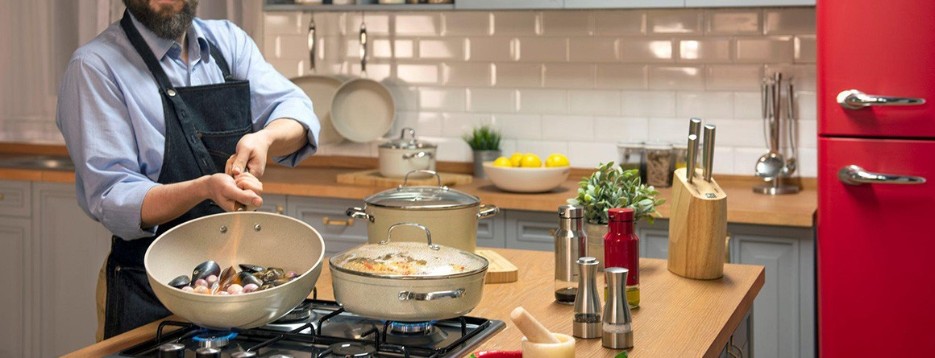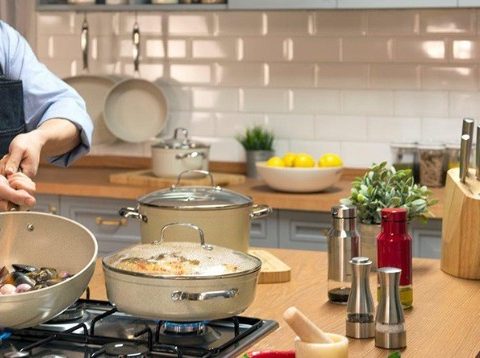Tips and Techniques to Prevent Food from Sticking to Your Pots and Pans
Monday, October 14, 2024
Why Does Food Stick?
Even the best pans can have sticking issues. Common causes include:
- The pan wasn’t preheated properly or is overheated.
- The food is too dry or all moisture has evaporated.
- No oil or butter was used to create a slippery barrier.
- Using low-quality cookware.
- Residual food bits from previous cooking sessions.
- Cooking on too high heat.
Choosing the Right Cookware
Material & Coating
- Stainless Steel: Requires preheating and oiling. Look for cores of copper or aluminum for better heat conduction.
- Nonstick Aluminum: Excellent release but handle gently—no metal tools or abrasive scrubbers.
- Cast Iron: When well-seasoned, it builds a natural nonstick surface over time.
- Enamelled Ceramic: Smooth, glass-like surface that resists sticking.
Size & Fit
Match pan diameter to burner size—especially on electric cooktops—to ensure even heating and prevent hot spots that cause sticking.
Heat Source Compatibility
- Induction: Requires magnetic bottoms (stainless steel, cast iron).
- Electric/Gas: Most materials work, but heat distribution varies.
Pro Tips to Keep Your Cookware Nonstick
Create a Water Barrier for Dairy
Rinse or rub the pan with ice before heating milk or cream to form a thin water layer that prevents proteins from bonding to the surface.
Avoid Acid in Bare Cast Iron
Tomato or vinegar-based dishes can degrade un-enameled cast iron. Use stainless steel, enameled cast iron, or nonstick pans instead.
Bring Ingredients to Room Temperature
Cold food cools the pan surface on contact, increasing sticking—let ingredients rest 15 min before cooking.
Preheat Properly
Warm the pan over medium heat until a drop of water sizzles and evaporates immediately, then add food. Avoid heating an empty pan too long to prevent damage.
Maintain Consistent Heat
Too low heat causes sticking; too high burns oil. Medium to medium-high is ideal for most foods—adjust as needed.
Use the Right Oil
Heat oil until it shimmers (not smokes), then add food. For high-heat cooking, choose oils with a high smoke point (rapeseed, ghee).
Season Cast Iron & Carbon Steel
Coat with a thin layer of oil after each use and heat until polymerized to build up a durable nonstick surface.
Cool & Clean Correctly
Avoid plunging hot pans into cold water. Use gentle sponges on nonstick and hand-dry cast iron immediately, then re-season.
Invest in Multi-Layer Stainless Steel
Single-layer stainless steel conducts heat poorly and sticks easily. Choose pans with aluminum or copper cores for even heating and less sticking.
Caring for Your Cookware
Regular care prevents scratches, residue build-up, and preserves nonstick performance. Treat your pans well, and they’ll reward you with years of frustration-free cooking.


